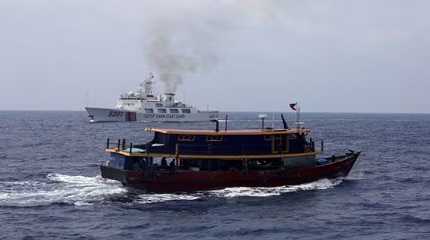
MANILA, Nov 11 (Reuters) - The Philippines' coast guard said on Saturday it would maintain its regular supply missions to troops stationed on a disputed atoll in the South China Sea even though it expects more Chinese vessels to be sent to the area.
The Philippines regularly sends supplies to a handful of troops living aboard an aging warship that was deliberately run aground on the Second Thomas Shoal in 1999 to assert Manila's sovereignty claims over the atoll.
China claims almost the entire South China Sea, including the Second Thomas Shoal, and has deployed hundreds of vessels to patrol there.
"We are still going to carry out these dangerous missions despite our limited number of vessels and despite the increasing number of Chinese vessels they are going to deploy," Philippine coast guard spokesperson Jay Tarriela told a press conference.
"We have to make sure the supplies will still reach our troops," Tarriela said, adding that China's coast guard is deploying smaller vessels to try to outmanoeuvre its Philippine counterpart.
He spoke a day after the Philippines condemned the Chinese coast guard for "unprovoked acts of coercion and dangerous manoeuvres," including using a water cannon against one of its boats in an attempt to disrupt a resupply mission.
China's Embassy in Manila said on Saturday its coast guard had taken necessary enforcement measures against Philippine ships after the vessels infringed on Beijing's sovereignty.
The U.S. State Department said on Saturday it stands with the Philippines, with which it has signed a defence treaty.
"We urge the PRC (People's Republic of China) to respect the high seas freedoms of navigation guaranteed to all states under international law," it said in a statement, reaffirming its commitment to the defence treaty.
Philippine President Ferdinand Marcos has pursued warmer ties with Washington, reversing the pro-China stance of his predecessor and leading to a rise in tension in the South China Sea.




